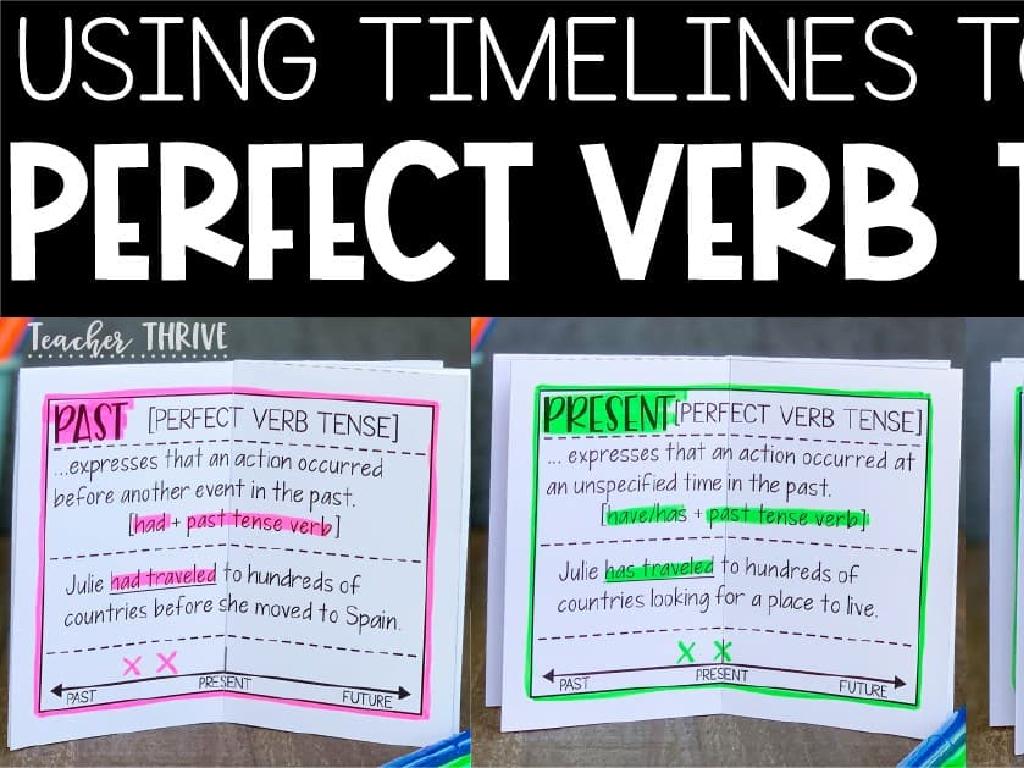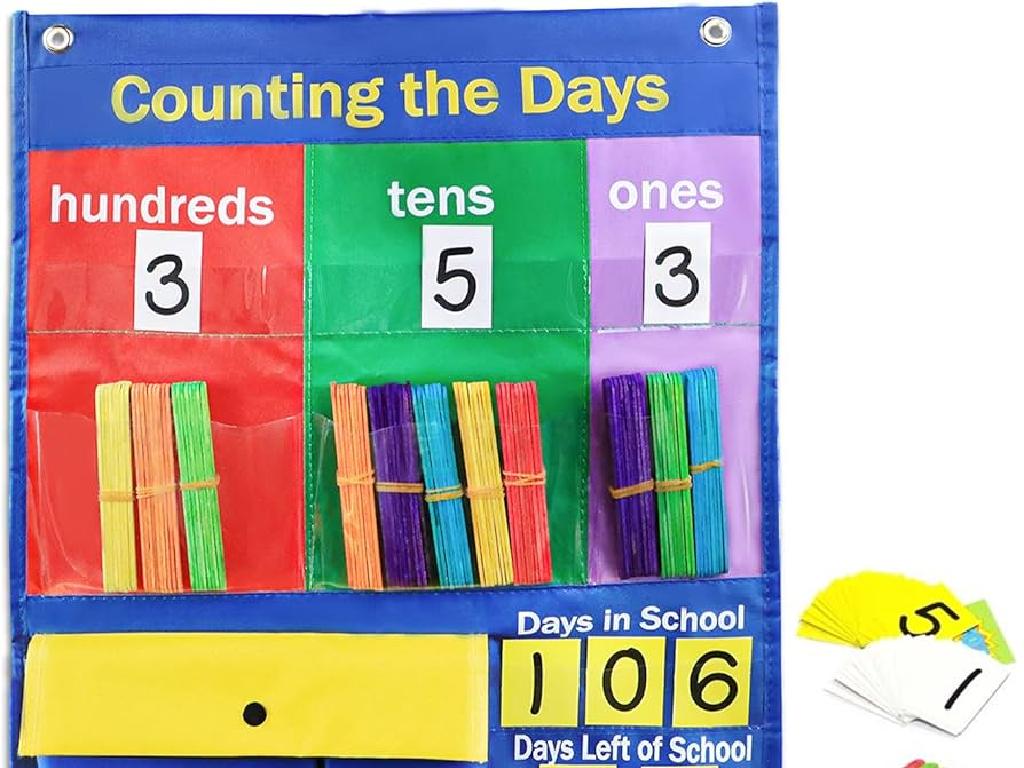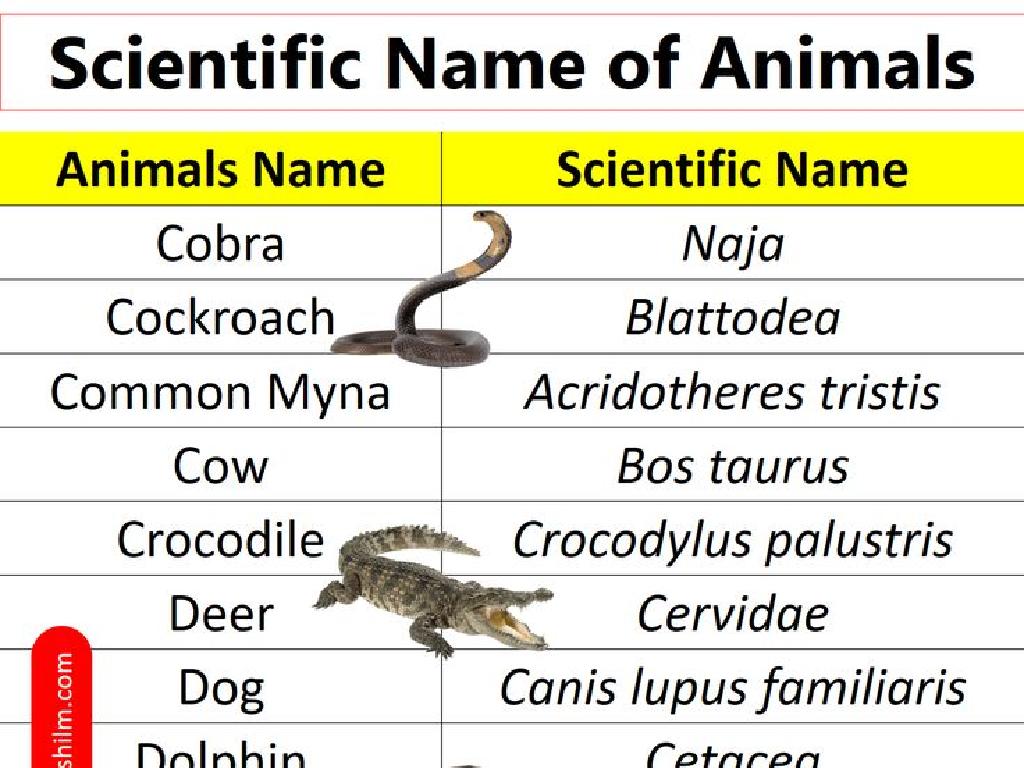Balance Addition Equations - Up To Three Digits
Subject: Math
Grade: Second grade
Topic: Addition: Three Digits
Please LOG IN to download the presentation. Access is available to registered users only.
View More Content
Welcome to Addition: Balancing Equations
– Greetings, young mathematicians!
– Today’s focus: balanced addition
– We’ll learn to balance equations up to three digits
– Equations are like seesaws
– Imagine a seesaw: both sides need to be level
– Both sides must be equal
– If one side has a sum, the other side needs the same sum
|
This slide is designed to introduce second-grade students to the concept of balanced addition equations. Start by creating a welcoming and exciting atmosphere for the students. Explain that today’s lesson will focus on understanding how to balance addition equations with numbers up to three digits. Use the analogy of a seesaw to help them visualize the concept of balance in equations, emphasizing that both sides of an equation must have the same value, just like a seesaw needs to be level. Encourage the students to think of the numbers and the plus sign as friends that work together to stay balanced. This foundational understanding will be crucial as they progress in their mathematical skills.
Understanding Addition Equations
– What is an addition equation?
– A math sentence showing equality
– Parts of an addition equation
– Numbers, an addition sign, and an equal sign
– Example: 2 + 3 = 5
– Adding 2 and 3 equals 5
– Balancing equations
– Both sides of ‘=’ must be the same
|
This slide introduces the concept of addition equations to second-grade students. Start by explaining that an addition equation is like a math sentence that tells us two things are the same. Show them the parts of the equation: the numbers being added, the addition sign (+), and the equal sign (=). Use simple examples like 2 + 3 = 5 to illustrate that when we add the numbers on the left side of the equal sign, the sum must match the number on the right side. Emphasize that ‘balancing’ means making sure both sides of the equation are equal. Encourage students to think of their own addition equations and practice balancing them.
Balancing Addition Equations
– Equations are like seesaws
– Just like a seesaw needs balance, so do equations.
– Both sides must be equal
– If one side has a number, the other side needs the same total value.
– Match three-digit numbers
– If one side is 123, the other side must add up to 123 too.
– Solve for balance
– We can add numbers to make both sides have the same total.
|
This slide introduces the concept of balancing equations to second-grade students by comparing equations to seesaws, a concept they can easily visualize and understand. Emphasize that just like a seesaw, the numbers on both sides of the equation must be equal to be balanced. Use examples with three-digit numbers to show how both sides of the equation must add up to the same amount. Encourage students to think of the equation as a puzzle where they need to find the missing piece to make both sides match. Provide practice problems where students can apply this concept by finding the missing number that balances the equation.
Understanding Three-Digit Numbers
– Three places in numbers
– Example: Number 456
– 456 has 4 hundreds (400), 5 tens (50), and 6 ones (6)
– Adding each place value
– Add hundreds, then tens, then ones
– Practice with addition
– Let’s add 456 + 123 as a class
|
This slide introduces students to the concept of three-digit numbers and their place values, which is crucial for understanding addition at this level. Start by explaining that every digit in a three-digit number has a place value: hundreds, tens, and ones. Use the number 456 as an example to illustrate the concept, breaking it down into 400 (4 hundreds), 50 (5 tens), and 6 (6 ones). Then, demonstrate how to add three-digit numbers by lining up the digits according to their place values and adding each column separately, starting from the ones place. Encourage students to practice this method by working through an example as a class, such as 456 + 123, and prepare additional similar problems for them to solve.
Solving Addition Problems Step by Step
– Start with adding the ones
– Example: 3 + 5 in 123 + 345
– Next, add the tens place
– Example: 20 + 40 in 123 + 345
– Then, add the hundreds place
– Example: 100 + 300 in 123 + 345
– Combine all for the total
– 400 + 60 + 8 equals 468
|
This slide is aimed at teaching second graders how to approach addition problems involving three-digit numbers. Begin by explaining the importance of adding numbers place by place, starting with the ones, then tens, and finally the hundreds. Use the example provided to illustrate the process step by step. Emphasize that each place should be added separately before combining them for the final sum. Encourage students to practice with similar problems and ensure they understand the concept of carrying over when the sum exceeds 9 in any place value.
Balancing Equations with Missing Numbers
– Understand missing numbers
– Subtract known number from total
– If 234 + ___ = 567, what is the ___?
– Find the missing addend
– 567 – 234 equals the missing number
– Practice with examples
– Try 452 + ___ = 705 to find the missing number
|
This slide introduces the concept of finding missing numbers in addition equations. It’s important to explain to the students that the missing number, or ‘addend,’ can be found by subtracting the known number from the total. Use the example provided to demonstrate the process step by step. Encourage students to use subtraction to solve for the missing number and remind them that the order in subtraction matters. Provide several examples for the students to practice, and be ready to assist them as they work through the problems. This activity will help reinforce their understanding of addition and subtraction as inverse operations.
Let’s Practice Together: Balancing Equations
– Pair up with a classmate
– Solve the given equation
– Use addition skills to find the solution
– Find the missing number
– The missing number makes the equation true
– Ensure both sides balance
– Check your work by adding both sides
|
This slide is designed for an interactive class activity where students will work in pairs to practice balancing addition equations with up to three digits. Provide each pair with an equation that has a missing number, such as 123 + ___ = 145. Encourage them to use their addition skills to find the missing number that balances the equation. After solving, they should verify that both sides of the equation are equal. This exercise will help reinforce their understanding of addition and the concept of equality in equations. Possible variations of the activity could include using different numbers, having students create their own equations for others to solve, or introducing a timed challenge for added engagement.
Class Activity: Balance the Equation!
– Receive a unique worksheet
– Find the missing numbers
– Use addition skills up to three digits
– Ensure both sides are equal
– Group review at the end
– Discuss as a class to understand different solutions
|
This interactive class activity is designed to help second-grade students apply their knowledge of addition with three-digit numbers. Each student will receive a worksheet with a set of equations where they must determine the missing numbers to balance both sides. This exercise will reinforce their understanding of addition and the concept of equality in equations. After completing the worksheets, the class will come together to review the answers, allowing students to learn from each other’s methods and mistakes. The teacher should circulate during the activity to provide guidance and ensure that students are on the right track. Possible variations of the activity could include pairing students to work together, using manipulatives for a hands-on approach, or creating a game where students race to balance equations correctly.






